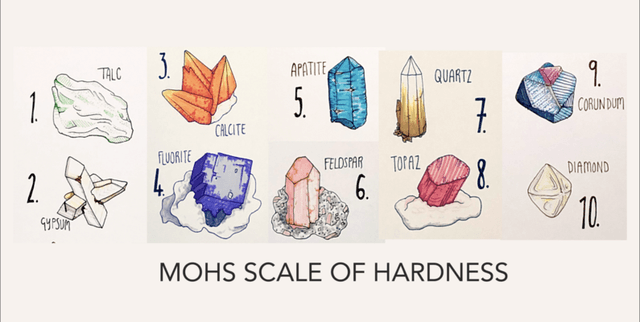Material Hardness Properties
Data Science and Analytics
Tags and Keywords
Trusted By




"No reviews yet"
Free
About
This dataset focuses on the prediction of Mohs Hardness, a critical property in materials design, particularly for applications like ceramic coatings and abrasives. Hardness testing offers a non-destructive and straightforward method to assess a material's plastic characteristics. The dataset supports a machine learning approach to predict hardness in naturally occurring materials by integrating atomic and electronic features derived directly from their composition. These features include van der Waals and covalent radii, as well as the number of valence electrons. The dataset was compiled to train classifiers that can predict Mohs hardness across diverse chemical spaces, crystal structures, and crystal classes of minerals.
Columns
- Hardness: The quantitative value representing a material's resistance to permanent or plastic deformation. This is the target variable for prediction.
- allelectrons_Total: The total number of electrons in the material's composition.
- density_Total: The total density of the material.
- allelectrons_Average: The average number of electrons across the constituent elements.
- val_e_Average: The average number of valence electrons, which are crucial for chemical bonding and material properties.
- atomicweight_Average: The average atomic weight of the elements in the material.
- ionenergy_Average: The average ionisation energy of the neutral atoms in the composition.
- el_neg_chi_Average: The average Pauling electronegativity of the most common oxidation state among the constituent elements.
- R_vdw_element_Average: The average van der Waals radii of the elements. Van der Waals radii are related to the size of atoms.
- R_cov_element_Average: The average covalent atomic radii of the elements, indicating the size of an atom when it forms a covalent bond.
- zaratio_Average: The average atomic number to atomic mass ratio.
- density_Average: The average density of the material's constituent elements.
Distribution
The dataset is typically provided in CSV format. It comprises two main files: one for artificial crystals and another for supplementary mineral data. The primary dataset, used for training and testing classification models, contains data for 622 uniquely composed minerals. An independent validation dataset includes data for 51 synthetic single crystals. Specific numbers for rows or records within each CSV file are not explicitly available in the provided sample. The 'Artificial_Crystals_Dataset.csv' file has a size of 9.78 kB.
Usage
This dataset is ideal for developing and validating machine learning models aimed at predicting Mohs hardness based on material composition. It can be used by researchers and practitioners in materials science to:
- Explore the relationship between compositional features and material hardness.
- Train classification models to predict Mohs hardness values.
- Develop new materials with desired hardness properties through computational design.
- Conduct studies on the behaviour of materials across different crystal systems and chemical spaces.
Coverage
The dataset's scope encompasses both naturally occurring minerals and synthetic single crystals. It includes materials with various crystal structures such as monoclinic, rhombohedral, hexagonal, tetragonal, cubic, orthorhombic, triclinic, trigonal, and amorphous structures. There is no specific geographic or time range coverage mentioned. Data availability notes detail specific crystal structures represented within both the training and validation sets.
License
CC0: Public Domain
Who Can Use It
This dataset is suitable for:
- Materials Scientists: For understanding and predicting material properties.
- Computational Materials Scientists: For developing and testing computational models for materials design.
- Data Scientists: For applying machine learning techniques to real-world scientific problems.
- Researchers: Those investigating the correlation between atomic and electronic features and macroscopic material properties like hardness.
- Machine Learning Practitioners: For building and evaluating classification models on a structured scientific dataset.
Dataset Name Suggestions
- Mohs Hardness Prediction Dataset
- Material Hardness Properties
- Mineral Composition & Hardness
- Crystalline Hardness Data
- Predictive Material Properties
Attributes
Original Data Source: Material Hardness Properties
Loading...
Free
Download Dataset in ZIP Format
Recommended Datasets
Loading recommendations...
